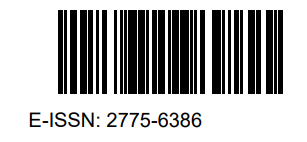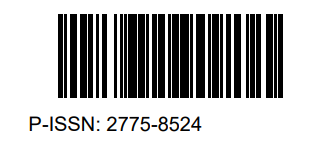SEMIOTIC ANALYSIS IN FORENSIC LINGUISTICS: THE MEANING OF SYMBOLS IN THE TEMPO NEWS OFFICE TERRORISM CASE
DOI:
https://doi.org/10.33477/lingue.v7i1.9473Keywords:
forensic linguistics, pig’s head, symbolic violence, threat communication, rat carcassAbstract
Abstract
The act of terror against the Tempo Newsroom through the delivery of physical symbols such as a pig’s head and rat carcasses represents a complex form of threatening communication laden with symbolic meaning. This study examines how the symbolic meanings of these acts of terror can be interpreted through a semiotic approach within the framework of forensic linguistics, and how such symbols function as a form of non-verbal threat communication. The objective of this research is to analyze the pig’s head and rat carcasses as cultural signs used in the context of intimidation against independent media. This qualitative descriptive research employs semiotic theories (Saussure and Peirce), Bourdieu’s theory of symbolic violence, and forensic linguistic analysis of indirect speech acts. Data were obtained through document analysis of online news reports, public statements, and relevant academic literature. The findings reveal that the pig’s head and rat carcasses function as symbolic representamen socially constructed as acts of humiliation and warning. These signs carry connotations of impurity, filth, and threats directed at press institutions as a means of controlling freedom of expression. The symbols serve as indirect speech acts that are coercive and intimidating. The study concludes that symbolic violence in the form of non-verbal physical terror can serve as an effective tool of domination, especially when interpreted within the socio-political and cultural context in which it occurs.
References
Albuquerque, R. N. de. (2024). Semiótica Jurídica: O Discurso Jurídico E A
Interpretação Do Fenômeno Linguístico Consubstanciada Na Linguagem Para
A Compreensão Da Lei E Sua Aplicabilidade. Duc In Altum - Cadernos de
Direito, 16(39), Article 39. https://doi.org/10.22293/2179507x.v17i39.3015.
Azhniuk, L. V. (2022). Threat As An Object of Forensic Linguistics. Movoznavstvo,
323 (2), 41–62. https://doi.org/10.33190/0027-2833-323-2022-2-003.
Baranov, A. (2020). Speech and Gesture in Forensic Linguistics in Bribery Case:
Towards Semantics and Pragmatics of “Closed” Discourses. Vestnik
Volgogradskogo gosudarstvennogo universiteta. Serija 2. Jazykoznanije, 1,
64–76. https://doi.org/10.15688/jvolsu2.2020.1.6
Barthes, R. (1967). Elements of Semiology. https://scispace.com/papers/elements-ofsemiology-3g61rlhvgb.
Corduneanu-Huci, C., & and Hamilton, A. (2022). Selective Control: The Political Economy of Censorship. Political Communication, 39(4), 517–538. https://doi.org/10.1080/10584609.2022.2074587
Fakih, A. (2024). Media Under the Law: Press Freedom Challenges in Indonesia. Indonesia Media Law Review, 3(1). https://doi.org/10.15294/imrev.v3i1.78900141.
Fatmawati, N. I. (2020). Pierre Bourdieu dan Konsep Dasar Kekerasan Simbolik. Madani Jurnal Politik dan Sosial Kemasyarakatan, 12(1), 41–60. https://doi.org/10.52166/madani.v12i1.1899.
Hammadi, S. S., & AL-Ahmedi, M. W. A. (2015). A Semiotic Analysis of Threat and Warning Symbols in George Orwell’s Novel 1984. International Journal of Research, 2(11), Article 11.
Hoogervorst, T., & Jákl, J. (2024). Fearsome Game, Popular Meat, Symbolic Wealth: Human-Pig Relations in Pre-Islamic Java. https://doi.org/10.1163/15685306- bja10197.
Husain, S. (2023). Power Politics and Media: An Understanding of Their Interplay. RESEARCH REVIEW International Journal of Multidisciplinary, 8(8), Article 8. https://doi.org/10.31305/rrijm.2023.v08.n08.012.
Innis, R. (1985). Semiotics: An introductory anthology. Bloomington : Indiana University Press. http://archive.org/details/semioticsintrodu0000unse.
Jurj, G. (2007). Signs in the medical context and the semiotic codes: An introduction
6206, 6 (20), 32–36. https://doi.org/10.51910/ijhdr.v6i20.26.
Kilby, L. (2016). Symbols of Terror: ‘9/11’ as the Word of the Thing and the Thing of the Word. Journal for the Theory of Social Behaviour, 46(2), 229–249. https://doi.org/10.1111/jtsb.12097.
Kovkina, Y., Aloyan, M., & Avoyan, L. (2022). Relevance of Forensic Linguistic
Speech Analysis in Criminal Cases Regarding Threat Incrimination. Theory
and Practice of Forensic Science and Criminalistics, 28(3), Article 3.
https://doi.org/10.32353/khrife.3.2022.06.
Kramsch, C. (2020). Language as Symbolic Power. Cambridge University Press. https://doi.org/10.1017/9781108869386.
Larner, S. (2015). From intellectual challenges to established corpus techniques: Introduction to the special issue on forensic linguistics. Corpora, 10(2), 131– 143. https://doi.org/10.3366/cor.2015.0071.
McElvaney, T. J., Osman, M., & Mareschal, I. (2021). Perceiving threat in others: The role of body morphology. PLOS ONE, 16(4), e0249782. https://doi.org/10.1371/journal.pone.0249782.
Media, K. C. (2025a, March 21). Dewan Pers Kecam Teror terhadap Jurnalis Tempo,
Minta Aparat Bertindak Tegas. KOMPAS.com. terhadap-jurnalis-tempominta-aparat-bertindak-tegas
Media, K. C. (2025b, March 22). Sebelum Dikirimi 6 Bangkai Tikus, Tempo Diancam
Teror “Sampai Mampus Kantor Kalian.” KOMPAS.com.
Media, K. C. (2025c, March 22). Sebelum Dikirimi 6 Bangkai Tikus, Tempo Diancam
Teror “Sampai Mampus Kantor Kalian” Halaman 2. KOMPAS.com.142. https://megapolitan.kompas.com/read/2025/03/22/19280471/sebelumdikirimi-6-bangkai-tikus-tempo-diancam-teror-sampai-mampus-kantor.
Media, K. C. (2025d, March 22). Tempo Diteror Kepala Babi dan Bangkai Tikus,
Amnesty International: Usut Tuntas Dalangnya. KOMPAS.com.
Mozaheb, M. A., Shahiditabar, M., Torabi, K., & Hassani, P. (2018). An analysis of
azerbaijani turkish translations of civil and criminal ayas of the holy qur’an: A
forensic linguistic perspective. Foresic Research & Criminology International
Journal, 6(2). https://doi.org/10.15406/frcij.2018.06.00195.
Musawir, M., Amir, J., & Saleh, M. (2022). Honesty in Language in Special Fugitive
Scandal: Forensic Linguistic Studies in Broadcasting Talks Indonesia Lawyers
Club. Journal of Asian Multicultural Research for Social Sciences Study, 3(1),
Article 1. https://doi.org/10.47616/jamrsss.v3i1.256.
Nöth, W. (2023). Semiotics. In J. E. Joseph, L. R. Waugh, & M. Monville-Burston (Eds.), The Cambridge History of Linguistics (pp. 859–884). Cambridge University Press. https://doi.org/10.1017/9780511842788.041
Ozyumenko, V., & Larina, T. (2020). Discourse of Threat as a Strategy of Emotional Persuasion and Manipulation https://www.academia.edu/66968671/Discourse_of_Threat_as_a_Strategy_o_Emotional_Persuasion_and_Manipulation.
Patnaik, U., & Chauhan, A. S. (2024). Derailing of Fourth Pillar of the Democracy
and Future of Accountable, Transparent Democratic System. IJFMR -
International Journal For Multidisciplinary Research, 6(2).
https://doi.org/10.36948/ijfmr.2024.v06i02.14692.
Rahmat, W. (2015). Bahasa Ancaman dalam Teks Kaba Sabai Nan Aluih Berbasis Pendekatan Linguistik Forensik. Jurnal Arbitrer, 2(1), 81–97. https://doi.org/10.25077/ar.2.1.81-97.2015.
Ravindran, V. (2019). Data Analysis in Qualitative Research. Indian Journal of Continuing Nursing Education, 20(1), 40. https://doi.org/10.4103/IJCN.IJCN_1_19.
Rodrigues, A. (2008). Islam and Symbolism. Military Review. https://www.semanticscholar.org/paper/Islam-and symbolismRodrigues/7ee54a6aa14080e7f7655c63830d2aacc128dd8b
Schmidt, J. A. (2022). Peirce’s evolving interpretants. Semiotica, 2022(246), 211–223. https://doi.org/10.1515/sem-2020-0115.
Schubert, J. D. (2012). Suffering/symbolic violence. In M. Grenfell (Ed.), Pierre
Bourdieu: Key Concepts (2nd ed., pp. 179–194). Acumen Publishing.
Sebeok, T. A. (2001). Signs: An introduction to semiotics (2nd ed). University of Toronto Press.
Shuy, R. W. (2023). Forensic Linguistics. In M. M. Houck (Ed.), Encyclopedia of Forensic Sciences, Third Edition (Third Edition) (pp. 620–629). Elsevier. https://doi.org/10.1016/B978-0-12-823677-2.00005-2.
Sigdel, S. B. (2018). Culture and Symbolism Nexus in Anthropology. Janapriya Journal of Interdisciplinary Studies, 7(1), Article 1. https://doi.org/10.3126/jjis.v7i1.23061.
Simandjuntak, M. E., Soerjowinoto, P., Wijaya, E. M. K., & Mumtazah, H. (2024). A
Snapshot of Violence and Criminalization Against Journalists in Indonesia:
Enhancing the Safety of Journalists. IJCLS (Indonesian Journal of Criminal
Law Studies), 9(1), Article 1. https://doi.org/10.15294/ijcls.v9i1.48789.
Tempo, T. (2025a, March 28). Kronologi Detail Teror Kepala Babi dan Bangkai Tikus untuk Redaksi Tempo. Tempo.Co.https://www.tempo.co/politik/kronologi-detail-teror-kepala-babi-dan-bangkaitikus-untuk-redaksi-tempo-1225227.
Tempo, T. (2025b, March 28). Sepekan Teror di Tempo: Detik-detik Kepala Babi,
Ancaman dari Akun @derrynoah, dan 6 Bangkai Tikus. Tempo.Co.
Werdiningsih, E., & B, A. H. (2022). Lima Pendekatan dalam Penelitian Kualitatif. Likhitaprajna Jurnal Ilmiah, 24(1), 39–50. https://doi.org/10.37303/likhitaprajna.v24i1.217
Wessing, R. (2006). Symbolic Animals in the Land between the Waters: Markers of Place and Transition. Asian Folklore Studies, 65(2), 205–239.
Zhu, Z. (2024). Peirce’s philosophy of language. Chinese Semiotic Studies, 20(3), 425–446. https://doi.org/10.1515/css-2024-2025.
Баранов, А. Н. (2014, December 30). Феномен угрозы в лингвист ической т еории и эксперт ной практ ике. SciSpace - Paper. https://scispace.com/papers/fenomen-ugrozy-v-lingvisticheskoi-teorii-iekspertnoi-5ethb7detz.
Downloads
Published
How to Cite
Issue
Section
License
If accepted for publication, the copyright of the article belongs to the author. Copyright includes the exclusive right to reproduce or transmit manuscripts in any form and media: reprint, produce photographs, microfilm, or translated versions of the manuscript. Increasing parts of this journal, storage and transmission of databases of any form or media, such as electronic copies, electrostatic and mechanical copies, photocopies, recordings, magnetic media and so on are permitted without permission. LINGUE: Jurnal Bahasa, Budaya dan Sastra, allow readers to read, download, copy, distribute, print, search, or link the fulltext of its articles and allow readers to use them for any other lawful purpose. However, it can not be used for commercial purposes
Jika diterima untuk publikasi, hak cipta artikel adalah milik penulis. Hak Cipta mencakup hak eksklusif untuk mereproduksi atau mengirimkan manuskrip dalam bentuk dan media apa pun: mencetak ulang, menghasilkan foto, mikrofilm, atau versi terjemahan dari manuskrip tersebut. Memperbanyak bagian jurnal ini, penyimpanan dan transmisi database dalam bentuk atau media apa pun, seperti salinan elektronik, salinan elektrostatis dan mekanis, fotokopi, rekaman, media magnetis, dan sebagainya diizinkan tanpa izin. LINGUE: Jurnal Bahasa,Budaya dan Sastra, memungkinkan pembaca untuk membaca, mengunduh, menyalin, mendistribusikan, mencetak, mencari, atau menautkan teks lengkap artikelnya dan memungkinkan pembaca untuk menggunakannya untuk tujuan yang sah lainnya. Namun, tidak dapat digunakan untuk tujuan komersial

LINGUE : Jurnal Bahasa, Budaya, dan Sastra Ciptaan disebarluaskan di bawah Lisensi Creative Commons Atribusi-TanpaTurunan 4.0 Internasional.







